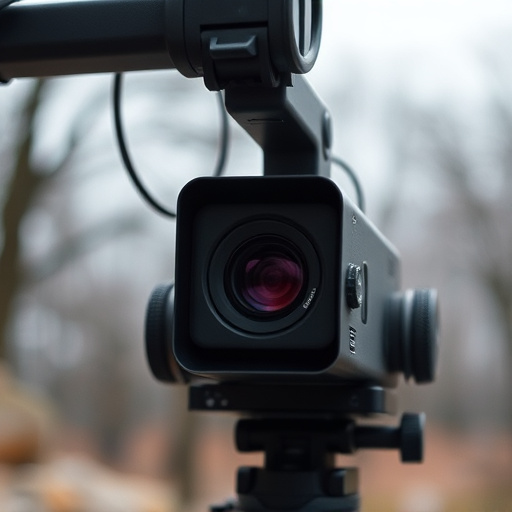Optimizing battery-operated hidden childcare camera placement in rental properties requires balancing security and privacy. Landlords should strategically position cameras in areas with clear sightlines but out of view, like corners or ceiling lights, covering high-traffic zones where children gather. Advancements in lithium-ion batteries enable discreet power solutions, enhancing monitoring while respecting tenant privacy. By deploying these cameras in overlooked common spaces, landlords proactively enhance safety without infringing on personal lives, adhering to local laws and regulations.
In the modern era of rental living, landlords seek efficient solutions for property management, often overlooking a crucial aspect: secret surveillance. This article unravels the art of identifying discreet placement spots for cameras within rental properties, focusing on battery-operated hidden childcare cameras as a unique tool. We explore battery technology’s role in achieving unobtrusive power sources while highlighting common areas frequently overlooked by landlords. Furthermore, we delve into legal considerations regarding privacy rights and surveillance, offering insights to balance security with tenant comfort.
- Identifying Discreet Placement Spots for Cameras
- Battery Technology: Unobtrusive Power Sources
- Common Areas Often Overlooked by Landlords
- Legal Considerations: Privacy Rights and Surveillance
- Advanced Cameras: Features to Detect Childcare Needs
Identifying Discreet Placement Spots for Cameras
Identifying Discreet Placement Spots for Cameras
In the context of rental properties, especially those catering to childcare services, installing Battery Operated Hidden Childcare Cameras requires strategic placement for optimal visibility and minimal disruption. Look for areas that offer clear lines of sight while keeping the cameras out of plain view. Common spots include corners of rooms, behind furniture, or within ceiling lights, where they can capture unobstructed footage without raising suspicion.
Consider the flow of movement within the space; places where children frequently pass by or gather can be valuable positions for cameras. Discreetly placing them in these areas ensures continuous monitoring without compromising privacy or disrupting daily activities. It’s essential to balance security needs with respect for tenants’ privacy, making sure all camera locations comply with local laws and regulations.
Battery Technology: Unobtrusive Power Sources
In recent years, battery technology has advanced significantly, offering a discreet and reliable power solution for hidden childcare cameras. These small yet powerful batteries allow for unobtrusive installation in rental properties without raising suspicion. Battery-operated hidden childcare cameras can now operate for extended periods on a single charge, ensuring continuous monitoring. This advancement is particularly beneficial for parents seeking peace of mind while their children are in the care of others.
The use of lithium-ion batteries, commonly found in consumer electronics, has revolutionized portable surveillance equipment. These versatile power sources can be easily concealed within everyday objects or furniture, making them ideal for covert operations. With proper placement and management, these cameras can capture unaltered footage without drawing attention to themselves, providing a safe and effective monitoring solution for parents everywhere.
Common Areas Often Overlooked by Landlords
Many landlords focus their surveillance efforts on private spaces within rental properties, such as bedrooms and living areas. However, they often overlook common areas that can be just as vital for monitoring. Hallways, lobbies, and even playrooms or childcare centers are potential hotspots for unauthorized activity. Battery-operated hidden childcare cameras, for example, can be discreetly placed in these areas to ensure the safety of residents, especially children.
By setting up surveillance in overlooked zones, landlords can gain a more comprehensive view of what’s happening within their properties. This proactive approach to security not only deters potential crimes but also provides evidence should any incidents occur. It’s about being prepared and ensuring the well-being of all occupants, regardless of the location within the rental space.
Legal Considerations: Privacy Rights and Surveillance
In the realm of rental properties, understanding legal considerations regarding privacy rights and surveillance is paramount. While landlords have legitimate interests in maintaining safe and secure environments, they must also respect the privacy of tenants. The use of hidden cameras, such as battery-operated childcare cameras, raises significant concerns. Tenants have a reasonable expectation of privacy in their homes, and any installation of surveillance devices without consent can be a breach of privacy rights.
In many jurisdictions, landlords need to obtain explicit permission from tenants before implementing any form of surveillance. Using hidden cameras for purposes other than security or maintenance without tenant knowledge can lead to legal repercussions. It’s essential to strike a balance between maintaining a safe living environment and preserving individual privacy. Landlords should explore alternative security measures that do not infringe upon their tenants’ personal lives.
Advanced Cameras: Features to Detect Childcare Needs
In today’s digital age, advanced cameras are transforming the way we monitor our rental properties, especially when it comes to childcare needs. One innovative solution gaining traction is the use of battery operated hidden childcare cameras. These discreet devices can be strategically placed in common areas or specific rooms to ensure a safe and nurturing environment for children. With their compact size and wireless connectivity, these cameras offer landlords and tenants peace of mind, allowing them to remotely monitor activities, ensuring the well-being of young residents.
Features such as motion detection, night vision, and two-way audio further enhance their capabilities. Landlords can receive alerts when certain events occur, like a child entering or exiting a room, helping them maintain a close eye on childcare arrangements. This technology not only promotes security but also facilitates effective communication between caretakers, tenants, and landlords, fostering a collaborative environment for the best interest of the children in the home.
In conclusion, while secret surveillance in rental properties raises significant privacy concerns, understanding discreet placement spots, advanced camera features, and legal boundaries can enable landlords to maintain safe environments. Integrating battery-operated hidden childcare cameras, designed with respect for tenant privacy, offers a responsible solution for monitoring common areas where children play. By balancing security and privacy, landlords can create safer spaces without infringing on tenants’ rights.
